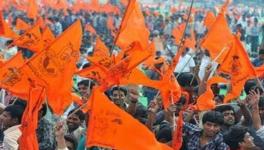How Ram Madhav is Getting the Moplah Resistance Wrong
Some days ago, the national executive member of the RSS and former national general secretary of the BJP, Ram Madhav, crudely declared that the resistance of the Moplah peasantry in South Kerala manifested the “Talibani mindset” in India. One wonders whether Madhav would ever mention the Brahmanical caste discrimination that prevailed in Kerala, which systematically enshrined the social exclusion of non-elite castes. Namboodiri Brahminism maintained elaborate ritualistic untouchability wherein the so-called lower castes such as the Tiyyas, Cherumans and Pulayas were considered “polluting”. The Tiyyas had to keep a physical distance of at least 32 feet and the Cheruman 64 feet from the Namboodiris.
Speaking of the Pulayas, James Forbes, a nineteenth-century traveller in British India, wrote:
“...they were not permitted to breathe the same air with the other castes, nor to travel a public road; if by accident they should be there and perceive a Brahmin and a Nair at a distance they must instantly make a loud howling, to warn him from approaching until they retired...”
With this treatment meted out to co-religionists by the Hindu Brahmanical social order, criticism of the social order in Kerala should proceed first from caste oppression. To not do this is either hypocritical or a silent defence of the hierarchical caste order. The stringent commitment of the RSS-BJP to the caste order was best asserted by Deen Dayal Upadhaya, one of its ideological founts. He wrote in his book, Integral Humanism, “In our concept of four castes, they are thought of as an analogous to the different limbs of Virat Purusha.” Since BJP-RSS oppose not just the annihilation of caste but any positive discrimination by the state, when the government implemented the Mandal Commission report in 1990, its mouthpiece, Organiser, called it a reactivation of “caste war”. One editorialist wrote that reservation policy “provides a premium for mediocrity and encourages brain drain”. Later, the RSS took a more open pro-upper caste stance when another columnist wrote of “an urgent need to build up moral and spiritual forces to counter any fall-out from an expected Shudra revolution”.
In 2006 when the UPA-I government passed the Central Education Institutions (Reservation in Admission) Act allocating 27% of seats to Other Backward Classes (OBC) candidates in elite public institutions such as the IITs and IIMs, Organiser in its June 2006 edition vigorously opposed this. It wrote,
“...The Congress-led UPA government at the Centre is hell bent upon destroying the last bastion of merit in the country by introducing the extended reservation system to allow the students of socially disadvantaged groups to get admission...not on the basis of merit but on the strength of quota.” It clearly establishes the social conservatism of the RSS-BJP that intends to keep the oppressed castes in a position of socio-economic and religious servitude of the upper-castes.
Now let’s unpack the issue of the Moplahs.
The Moplahs descended from the Arab merchants who were the lynchpin of the Indian Ocean-Red Sea trade complex. But the majority of Moplahs in Kerala converted to Islam from the oppressed castes along the coast. This very fact of mass conversion should be reason enough to question the basis of Madhav’s tirade. Had the Hindu social order been non-oppressive, conversion to Islam would not have taken in the first place.
Feudal India’s land relations on which was predicated the class structure that in turn depended on the caste system, made peasant resistance inevitable. But instead of the oppressed castes in the Hindu fold revolting, Kerala saw the Muslim Moplahs resisting their oppression fiercely against the upper-caste Hindu jenmis (landlords). They did resort to the use of the religious idiom, but almost all peasant insurgencies in India came cloaked in a religious idiom.
Often, new religions assumed a much broader mass base whilst riding the wave of peasant discontent, for example, Sikhism. It was chiefly propagated by gurus belonging to the Hindu Khatri caste with a secular-eclectic and egalitarian core, established by the fact that Guru Arjan invited the revered Muslim Sufi saint Mian Mir to lay the foundation stone of the Harmandar Sahib (now the Golden Temple). Sikhism assumed a mass character when the peasantry of the Doab responded to its egalitarian values and promises of better agrarian conditions. After the death of Guru Govind Singh, the resistance under Banda Singh Bahadur assumed a pro-peasant character. In a very short period, Banda Bahadur changed the landholding pattern of southern Punjab by liquidating the landed estates of the Muslim zamindars (landowners). They were broken up into several smallholdings and distributed to the Hindu and Sikh peasants cultivating them. As a result, the Muslim peasantry felt left out and nursed anti-Sikh sentiments, hitherto the preserve of the Muslim ruling elite.
The use of the religious idiom had its roots in the political structure of the feudal state. Since the ruling elite was not democratically elected, the dissent had to involve arms and violence, not a treat to the modern democratic eye. The feudal state/class did not back itself with the rule of law but relied on religious sanctions and symbols. So, it was quite natural that resistance of the oppressed class against it would have a strong religious element in it.
However, this is not to say that all peasant resistance movements were religious in nature. The Jat peasantry’s resistance against the extractive Mughal state in the 17th and 18th centuries had no connection with religion. In the case of the Jats, it was the caste identity and its overwhelming peasant base that acted as the binding cement. This made the uprising restricted to the Jats with no spillover to other oppressed sections. On the contrary, the landlord leadership of the Jats, Churaman to be precise, is recorded to have seized a number of Chamars (tanner caste) to guard the ditch of the Bharatpur fort.
The Moplah resistance followed a similar trajectory. British colonialism strengthened the landlord class vis-à-vis the tilling peasantry. The ryotwari settlement identified the landlords as the cultivators (ryots) instead of the actual worker of the land. The 1818 Board of Revenue Proceedings noted, “..the jenmi possessed a property in the soil more absolute than even that of the landlord in Europe”. Even worse was the absolute reclamation of the wastelands. Thus, “every inch of land” in Malabar was the private property of the landlords.
In the face of absolute ownership of land, all customary avenues of redress of the tenantry died out. The landlords became responsible for the payment of land revenue to the colonial state. They simply passed on the fiscal burden to the peasantry through the cunningly crafted policy of sub-letting the already leased land to new tenants and eviction at will of the older ones in favour of those who promised even a little more revenue.
The District Collector of Malabar William Logan made a conservative estimate of evictions when the Moplah resistance began surfacing in the mid-nineteenth century. He noted that, annually, about one in twenty cultivators had an eviction decree passed against him. Cambridge sociologist Manali Desai argues that the figure provided by Logan is an underestimation as most tenants could not afford the necessary litigation, and therefore numerous evictions went unrecorded. Moreover, there was no procedure for landlords to issue rent receipts, leaving cultivators with little basis to defend themselves.
The skewed pattern of land ownership and class relations inevitably sharpened religious enmity. By 1915, the 86 biggest landlord families owning hundreds of thousands of acres of land were all elite caste Hindus. The two dominant Hindu castes, the Namboodiris and the Nairs, accounted for 46 and 41 per cent of the total landlords despite being 2 and 14 per cent of the total population, respectively. So, why was the Hindu tenantry quiet despite having three times the eviction rate than the Moplahs (between 1841-51), who took up arms against landlordism? The earliest answer to this puzzle was provided by Prof. Barrington Moore, who was a political sociologist at Harvard University. He pointed to the role of the caste system and the ritualistic hierarchy of Hinduism in arresting the tendency of resistance among the Hindu tenantry. In the Moplahs’ relation with the landlords, there existed no religious or caste-sanctioned ties of piety and control. It is not surprising that the mosques, which allowed entry to all co-religionists, became the centre of Moplah organisation and plotting.
The religious element was further strengthened by the Moplah ulema, capable of playing both a sanctioning and a leadership role. This becomes apparent from the injunctions of Syed Fazl, a thangal (religious preacher) who, in his Friday orations at the Tirurangadi mosque, declared, “...it was no sin but a merit to kill a jenmi who evicted”. English historian and the author of the book, ‘The Moplah Rebellion and its Genesis’, Conrad Wood, has argued that the active participation of the thangals was because of their material dependence on the Moplah peasants. Very often, the thangals owned no “apparent property” and were supported by the “voluntary oblations of the followers”. Therefore, the material distress of the donors impacted the daily lives of the thangals, who, in turn, voraciously infused the religious idiom in a class conflict between Hindu jenmis and Muslim Moplahs.
Hence the Moplah resistance of Southern Malabar must be seen as a class resistance against the exploiting landlords who happened to be upper-caste Hindus. Madhav’s tirade is not just historically erroneous but reeks of communalism. If Hindus had risen against Muslim landlords, Madhav and his ilk would have celebrated it as a glorious chapter in history. The jaundiced eye of Hindutva sees the religion of the oppressed first and seldom their qualms which hardly have any basis in religion. Were not the protesting farmers in Delhi first branded as Khalistanis?
The author is a research scholar with the Department of World History, University of Cambridge. The views are personal.
Get the latest reports & analysis with people's perspective on Protests, movements & deep analytical videos, discussions of the current affairs in your Telegram app. Subscribe to NewsClick's Telegram channel & get Real-Time updates on stories, as they get published on our website.
























